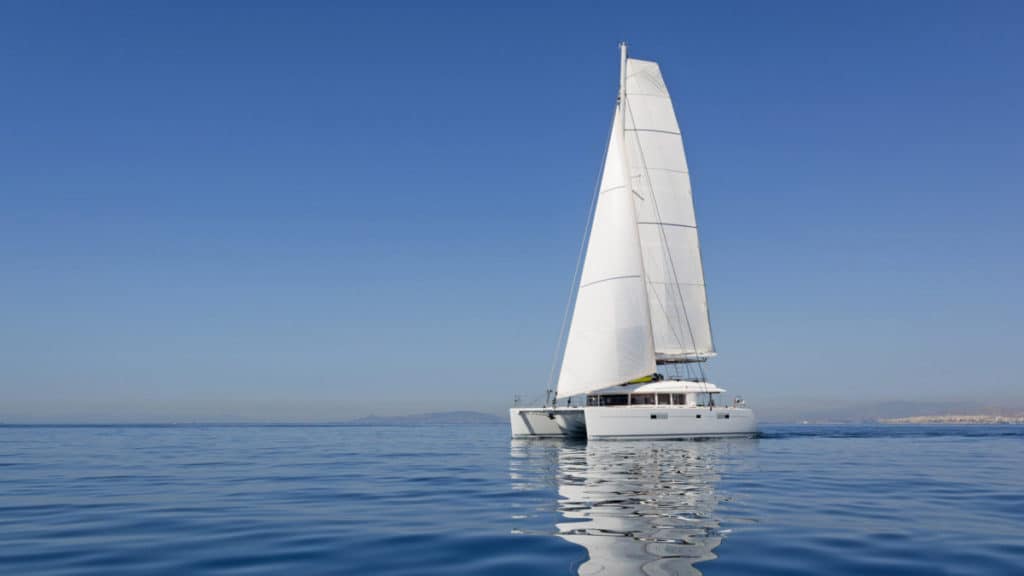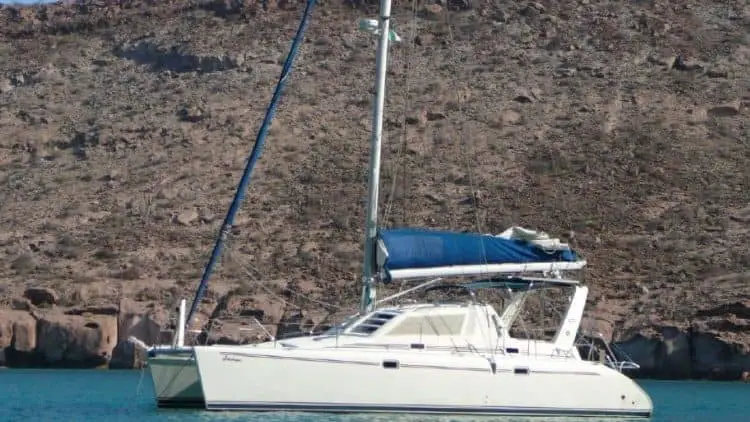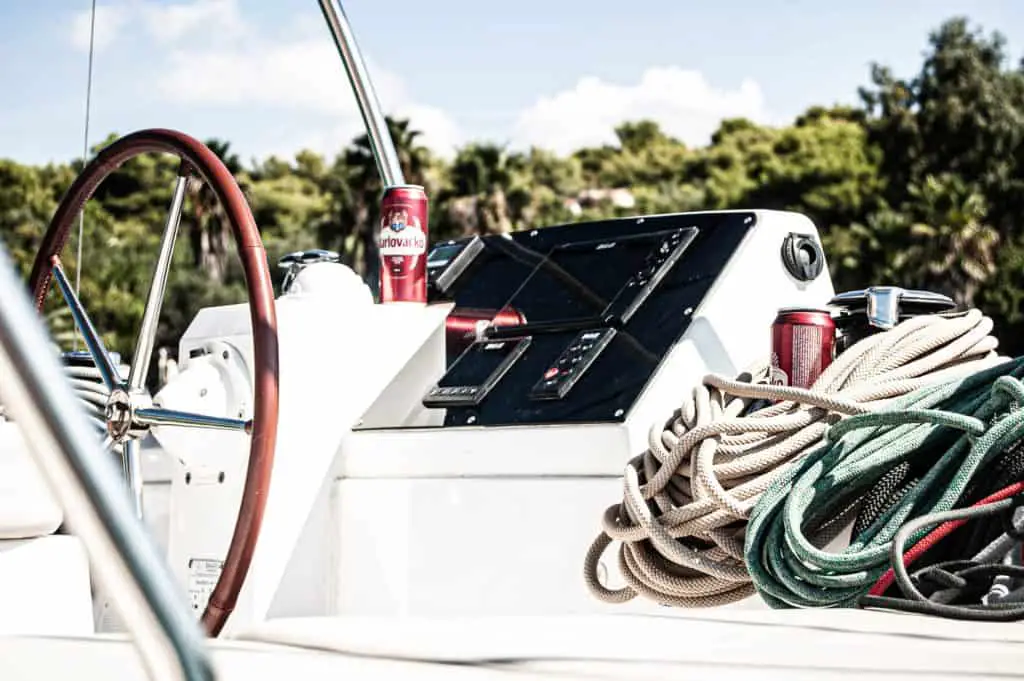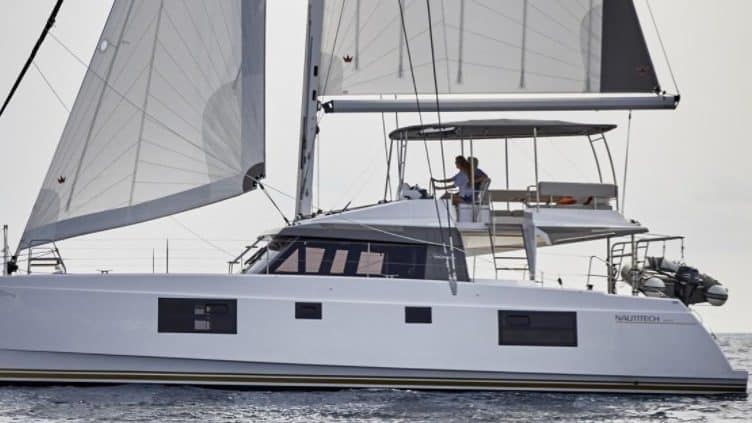As an Amazon Associate, we earn from qualifying purchases. We may also earn commissions if you purchase products from other retailers after clicking on a link from our site.
When Magellan and Elcano circumnavigated the globe, it took them three years. These days, you can make the trip in under two months in ships that are much more comfortable. Circumnavigation might conjure images of huge monohull ships, but can you make the trip in a catamaran?
You can sail a catamaran around the world if the boat is equipped for offshore cruising and has a heavy load capacity. Modern catamarans are well-balanced and can be large enough for multiple crew and their supplies. They’re fast and sail smoothly, making them a comfortable choice for long voyages.
Sailing a catamaran on a trip around the world can be rewarding, whether you’re going solo, with a partner, or a whole crew. This article will give you the information you need to start planning your voyage so you can cross one ocean or all of them.

What Makes Catamarans Good for Long Voyages?
Everything about the way catamarans are designed makes them good for long voyages. The dual-hulls make them more stable than their monohull counterparts. They also have a lower water resistance (drag) than monohulls and don’t produce as much of a wake. Ultimately, this makes them much harder to capsize, even in rougher waves.
Catamarans are also very fast and easy to handle. Dual engines make maneuvering in and out of ports easier–and if you’re sailing around the world, you’ll be stopping in a lot of ports. Because they’re lightweight and have such a low water resistance, they can go incredibly fast with wind alone in the open ocean.
Picking the Right Catamaran
Catamarans come in many sizes and are equipped for different types of sailing. Boats designed for chartered vacations and short trips close to shore are built differently from long-haul ships that cruise the open ocean full-time. Usually the owners version offer fewer berths and a different layout.
You’ll also want to balance the size of your boat with the size of your crew. If you’re sailing with a large group, a thirty or forty-foot ship might start feeling too small after a few weeks. Larger boats are also safer in the open ocean.
Inshore vs. Offshore
To sail around the world, you’ll want a catamaran that’s made for offshore sailing. Inshore boats will not be as comfortably designed and won’t necessarily be equipped for the weather and conditions of the open ocean.
Most inshore catamarans will be much too small for a long trip. Inshore boats are made for fishing close to shore or leisure boating, without room to store provisions or have a proper cabin. Offshore catamarans will also have better sails for cruising open waters and more comfortable living arrangements.
Offshore boats are made to be out at sea for weeks at a time, in all kinds of weather conditions. They will be more stable and sturdy than an inshore boat. A well-built offshore catamaran can sail so smoothly that you don’t have to bolt down the furniture or worry about capsizing in a squall.

Size Does Matter
The smaller the catamaran, the easier it is to capsize. For this reason, a larger boat is safer for a long voyage that takes you far offshore. The smallest you should go for a worldwide trip is about forty feet. Anything less would pose an unnecessary risk to you and the crew.
Don’t be deterred by the length of a boat when choosing your catamaran. Even large boats are easy to sail with a small crew these days (or on your own). The navigational tools and automated systems mean you can operate much larger boats by yourself or with just a handful of crew.
It’s also important to consider the weight and your speed. The longer the hulls, the faster you’ll be able to go. You’ll also have an easier time picking up knots if your boat is lighter. Whether that’s from netting on the deck instead of fiberglass, or smaller engines, or strategic cabins, the less weight your boat is carrying, the faster it can go.
Sailing Alone vs. With a Crew
Next to picking the right boat, picking the right crew is the most crucial part of preparing for a catamaran voyage around the world. Even if you’re only crossing one ocean and not going for a full circumnavigation, you’ll be sharing tight quarters and intense responsibility with the other people on the boat.
It’s possible for someone to sail most modern catamarans single-handedly. Automated controls and furling sails mechanisms make it possible to complete many sailing tasks on your own. It’s safer to travel with at least one companion in case of emergency, but sailing double-handed is more than enough crew.
On the other hand, a few weeks at sea can be a long time to be alone. Whether or not you need their help, a crew can be a welcome bit of camaraderie and social contact while you sail. With two hulls, catamarans have multiple good-sized berths so that you can maintain some privacy even with company aboard.
It’s also an option to take on extra crew for some legs of the journey, but not the whole thing. For any around-the-globe voyage, you’ll need to make stops along the way to restock provisions, make repairs, or even visit new places onshore. You can also make changes to your crew at these stops if your current configuration isn’t working out.
Other Helpful Tools To Sail a Catamaran Around the World
When you’ve chosen your boat and your crew, the next things you’ll need to get your catamaran voyage underway are your tools and provisions. The equipment on your boat will be important for navigation and survival.

Navigation and Boat Tech
When you’re preparing for your voyage, it’s a good idea to bring repair manuals and user guides for all of the electronic equipment on your catamaran, especially if you installed it yourself. Any literature or guides that came with the boat when you purchased it are also a good idea. Being at sea for an extended period means there are more opportunities for things to break and need repairs.
Aside from any radar system, you’ll also want a good CPN — or computer navigation system. Satellite imagery and maps aren’t always reliable, so having multiple forms of wayfinding is critical.
Similarly, you’ll want to have multiple methods to check the weather so you can avoid storms and rough waters.
While catamarans can take a significant amount of wind and rain, it’s better to be safe and steer away from storms whenever possible.
Provisions
One tool that will immensely improve your catamaran sailing trip is a water desalination and filtration system. Minimizing the amount of water you have to haul will help keep the boat light and quick. If you can “make” water while you sail, you’ll never have to worry about running out.
Refrigeration and storage in the galley is another place where innovation will help you make the most of your journey. Catamarans equipped with good kitchen appliances (and the generators or solar panels to support them) make it easier to pack your provisions.
The smooth handling of a catamaran also means you’ll have ample opportunity for some deep-sea fishing while you sail. There will be plenty of room on your boat to stow a Fiblink Offshore Heavy Trolling Rod from Amazon when you aren’t busy catching tonight’s dinner.
Conclusion
Sailing a catamaran around the world can be a wonderful adventure. Modern catamarans are perfectly designed for a comfortable and safe voyage across as many oceans you want to sail. Whether you’re going solo or taking a whole crew, a catamaran is a great choice for spending time on the open ocean.

